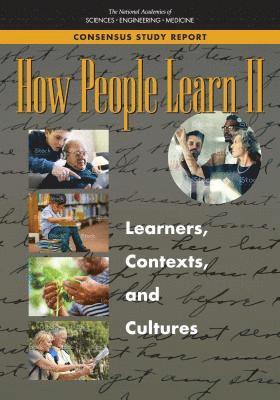
Fler böcker inom
- Format
- Häftad (Paperback / softback)
- Språk
- Engelska
- Utgivningsdatum
- 2018-10-27
- Förlag
- National Academies Press
- Medarbetare
- National Academies of Sciences Engineeri (förf.) / Division of Behavioral and Social Scienc (förf.) / National Academies of Sciences Engineering and Medicine (förf.) / Board On Science Education (förf.) / Board on Behavioral Cognitive and Sensory Sciences (förf.) / Committee on How People Learn II t
- Dimensioner
- 251 x 178 x 20 mm
- Vikt
- ISBN
- 9780309459648
- 681 g
How People Learn II
Learners, Contexts, and Cultures
Häftad,
Engelska, 2018-10-27
482
- Skickas från oss inom 2-5 vardagar.
- Fri frakt över 249 kr för privatkunder i Sverige.
Finns även som
Passar bra ihop
De som köpt den här boken har ofta också köpt Let Them Theory av Mel Robbins (inbunden).
Köp båda 2 för 786 krKundrecensioner
Har du läst boken?
Sätt ditt betyg »
Fler böcker av författarna
-
How People Learn
National Research Council, Division Of Behavioral And Social Sciences And Education, Cognitive Board On Behavioral And Sensory Sciences, Committee On Developments In The Science Of Learning With Additional Material From The Committee On
-
How Students Learn
Committee On How People Learn: A Targeted Report For Teachers, National Research Council, National Academy Of Sciences, Cognitive Board On Behavioral And Sensory Sciences, Division Of Behavioral And Social Sciences And Education
-
Community Programs to Promote Youth Development
Institute Of Medicine, National Research Council, Division Of Behavioral And Social Sciences And Education, Youth Board On Children And Families, Committee On Community-Level Programs For Youth
-
Framework for K-12 Science Education
National Research Council, Division Of Behavioral And Social Sciences And Education, Board On Science Education, Committee On A Conceptual Framework For New K-12 Science Education Standards, Division Of Behavioral And Social Scienc
Du kanske gillar
-
Atomic Habits
James Clear
Trade paperback (UK) -
The Creative Act
Rick Rubin
Inbunden


